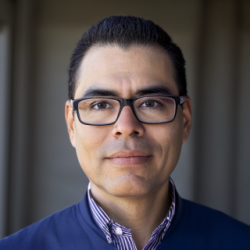Editor’s Note: This article by a Doximity Digital Health Fellow covers a new offering, Doximity GPT.
At 7:30 a.m., I begin my day as a general pediatrician by checking my in-basket: four parent messages and three new lab results. In the past, I would have approached this task with the enthusiasm of a picky toddler faced with a plate of vegetables. But today, I have a new ally — Doximity GPT.
Doximity GPT is an innovative AI tool tailored specifically for doctors. It's like Chat GPT but designed to meet the unique needs of physicians. This tool helps scour the internet and vast amounts of data to create human-like, surprisingly compassionate responses to the questions we might encounter. Doximity GPT can also act as a personal assistant, aiding with differential diagnoses, creating patient handouts for common disorders, and drafting responses to patient and parent messages.
The first message I tackle from my in-basket is from a first-time parent asking about introducing solids to their 6-month-old baby. Instead of painstakingly typing a response, I prompt: "Respond to this parent’s message—‘My baby is at the stage of introducing solids but I am wondering how to start this process. Any suggestions, Dr. Chu?’" Within seconds, an empathetic and accurate answer appears. The response details the timing for when to start solids, the kinds of textures of foods to introduce, as well as safety and allergy considerations. I’m impressed with the kind tone that the system has and the thoroughness of the information included — a better response than I could have written with twice the amount of time. I quickly scan it, add a few personal touches, and send it back. The parent immediately responds, expressing appreciation for the helpful information. The relief and gratitude in their reply energizes me for the next part of my day.
Encouraged, I respond to a 16-year-old patient’s high cholesterol results next. I remember this patient was particularly motivated to make healthier changes but struggled with a plan and next steps. Rather than replying with a simple response of “eat less fatty foods” and “exercise more,” I want to go above and beyond to help this patient, so I ask my new ally: "Create a patient handout about high cholesterol and generate a low-cholesterol nutrition plan." In seconds, I have a comprehensive handout that explains what high cholesterol is and includes a weekly meal plan — ranging from Greek yogurt with nuts and seeds to a grilled chicken and veggie wrap. I review it and discuss it with the patient and their family, exploring how to incorporate these changes. They love the meal ideas and feel more empowered and motivated to take charge of their health. We talk about their favorite foods and finding healthier alternatives, making the conversation feel more like a partnership than a lecture.
By 8 a.m., my first patient arrives, an 8-year-old boy with ADHD here for school concerns. He has been struggling to keep up in school, feeling constantly distracted, and falling behind with learning and reading. His parents are hesitant to start medication, so we discuss school accommodations and the process of requesting a 504 plan. His mother feels unequipped to write the request, so I turn to my app again: "Write a 504 plan sample letter." The generated letter is thorough, and we personalize it together, ensuring it reflects her son’s needs. She leaves feeling more confident about advocating for her child.
Next is a 5-year-old boy struggling with asthma control. He’s been to the ER three times in the past year and hasn’t been using his controller inhaler. I try something different and ask Doximity GPT to "Write a Dr. Seuss-style poem to help with asthma compliance." As I read it to my patient, he giggles. His parents are in awe at the creativity of this approach. I tell his parents to read the poem to him each time he takes his inhaler to make it a fun routine. My patient excitedly pinky promises me that he will start taking his inhaler every day.
As I bounce between well-child checks and upper respiratory infections, I keep thinking about a new patient added to the end of my schedule: a 16-year-old with anxiety booked for 4:40 p.m. The rise of teenage mental health challenges weighs heavily on my mind, and I wonder how I can help. When I meet her, we talk about her stressors, from schoolwork to social anxiety. Knowing the long waitlists for therapy, I ask the tool to “Create a handout about cognitive distortions.” It provides a detailed list and suggestions for overcoming them. After discussing these tools and resources for finding a therapist, she shares that she feels hopeful for the first time in a long time.
By 5:30 p.m., I’ve seen all my patients, responded to all messages, and cleared my inbox. Reflecting on the day, I realize not only how much time this app has saved me but how it helped me better serve my patients. It was like waving a magic wand. As I start my way home, I feel a twinge of excitement imagining how I will use Doximity GPT tomorrow.
Doximity GPT is a free, HIPAA-compliant AI assistant available exclusively in the Doximity app and on your computer at doximity.com/gpt. The next time you need help with chart notes, drafting appeals, or creating/translating patient education materials, simply prompt Doximity GPT with your request and start lightening your workload with AI. Try it out with a sample prompt here.
Dr. Tina Chu is a general pediatrician at a large multi-specialty group practice in San Diego, CA. Her professional interests include telehealth, informatics, artificial intelligence in health care, and mental health. She enjoys exploring new restaurants, walking her dog on the beach, and playing golf. Dr. Chu is an avid San Diego Padres fan and is a Doximity Digital Health Fellow. All names and identifying information have been modified to protect patient privacy.
Illustration by Diana Connolly







